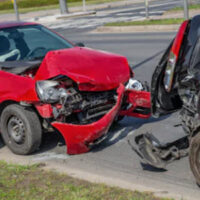What To Know About Rear-End Accidents

Rear-end accidents happen all the time. They can happen in rural areas, urban areas, highways, and city streets. While they are fairly common, they can also be very dangerous, especially when high speeds are involved. Rear-end accidents can be very hard to avoid and the damage can be severe.
Common Causes of Rear-End Accidents
Rear-end crashes are often caused by the following:
- Most accidents are caused by following a car too closely. Drivers have an obligation to drive safely and keep a safe distance from other vehicles.
- Speeding is related to tailgating in that the driver in the rear is going too fast to slow down in time to avoid an accident.
- Distracted driving. When a driver is distracted, they are not paying attention to what is going on in front of them. This can cause them to not see a car stopped in front of them, leading to a rear-end accident.
- Poor weather conditions. Sometimes it’s not safe to drive the speed limit. This is especially true when weather conditions are poor. Rain, ice, and snow can make the roads slippery, which can make it harder to control your vehicle. This can make rear-end accidents more likely.
- Poor maintenance. Faulty brakes and bald tires are dangers on the roadway. When a vehicle is not performing properly, a driver can lose control. They may not be able to stop in time, causing a rear-end accident.
Liability in a Rear-End Accident
In most rear-end car crashes, the vehicle in the back is the one at fault. These are the most common scenarios:
- A driver rear-ends a car that is slowing down for upcoming traffic.
- A car has its turn signal on but the driver behind it is not paying attention and crashes into the car as it slows down to turn.
- A driver plans to speed through a changing traffic signal but the driver in front stops.
- An impatient driver slams into the back of a vehicle when the vehicle does not accelerate right away at an intersection.
However, the driver that rear-ends the vehicle is not always at fault. There are situations where both drivers may be at fault. For instance, consider the following examples:
- The driver in front suddenly slams on the brakes for no apparent reason.
- The brake lights of the vehicle in front do not work.
- The driver in front fails to use a turn signal when attempting to make a turn.
- The driver in front puts their vehicle in reverse while in a traffic lane.
Contact Us Today
Rear-end crashes are one of the most common types of car accidents. Find out how you can stay safe and avoid these crashes.
The experienced Kissimmee auto accident lawyers at the Draper Law Office can answer your questions about car crashes and help you make the right decisions. Contact our office to learn more about your legal options. Call (407) 743-6628 or fill out the online form to schedule a consultation.
